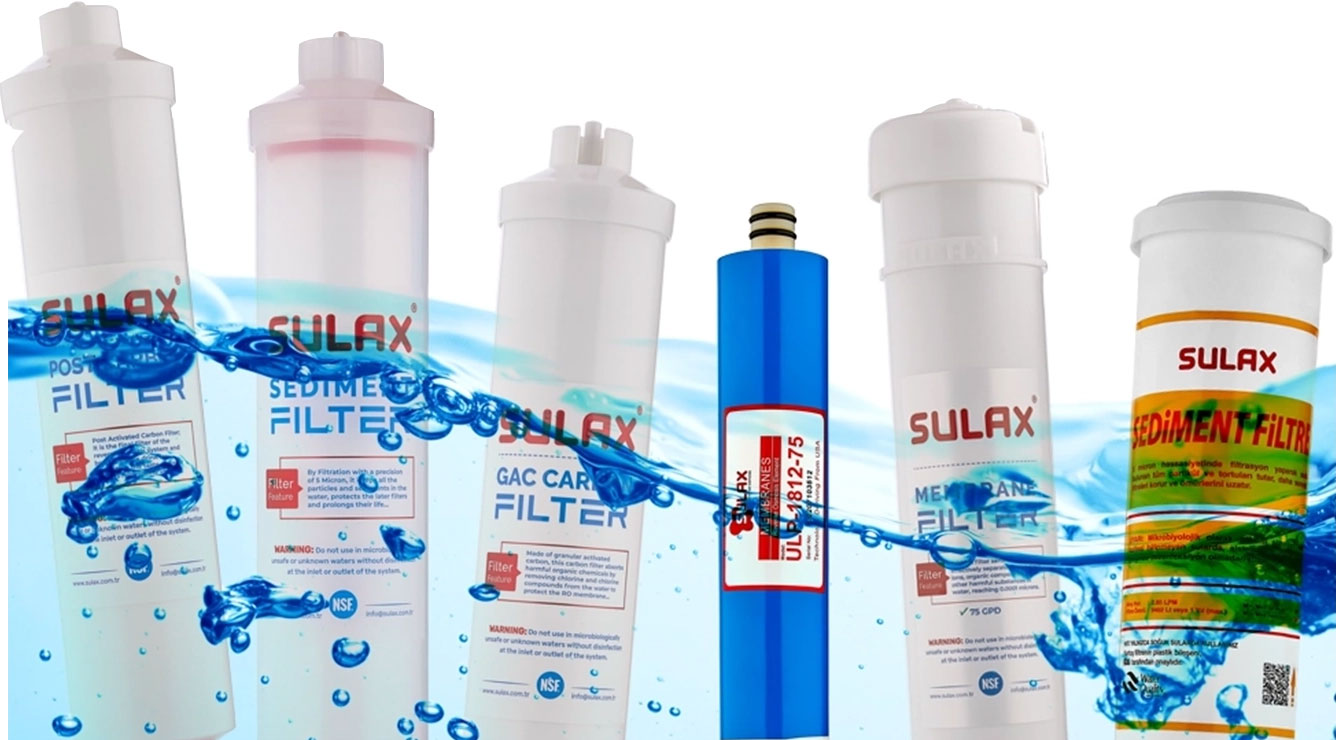
Water purification devices commonly used in homes remove harmful substances from tap water, making it safe to drink. However, the quality of purified water depends not only on its cleanliness but also on whether its pH value falls within the ideal range. So, what should the pH value of water from a purifier be, how can it be increased if it is too low, and how does it affect health? Here are all the details…
Ideally, the pH value of purified drinking water should be between 6.5 and 8.5. This range complies with both the Turkish Food Codex and World Health Organization (WHO) standards.
However, many water purification devices reduce the pH value while filtering out beneficial minerals. This is especially true for reverse osmosis systems. The pH level of purified water can drop to around 5.5–6.0, making it slightly acidic.
Slightly acidic water, when consumed over the long term, can disrupt the body’s mineral balance, negatively affect bone health, and increase stomach acidity. Therefore, knowing the pH level of the water produced by your purifier is very important.
Especially in models that use reverse osmosis technology, water purification devices remove minerals like calcium and magnesium while purifying the water. This reduces the buffering capacity of the water and lowers its pH.
Other factors that contribute to a lower pH include not replacing filters regularly, the hardness of the source water, or the lack of a mineral support filter in the system.
It is possible to raise the pH of water with low acidity to healthier levels. Here are the most common and effective methods:
1. Using a Mineral (Alkaline) Filter
The healthiest and most permanent solution is to add an alkaline filter to your device. These filters enrich the water with minerals such as calcium, magnesium, and potassium, increasing the pH and improving taste.
2. Alkaline Water Drops
Alkaline drops, which you can find at pharmacies and online stores, can raise the pH by adding a few drops to the water. However, this is a temporary solution and should be used carefully.
3. Adding Baking Soda
Another home method is adding half a teaspoon of baking soda to 1 liter of water. This can increase the pH, but it is not recommended for long-term use as it artificially alters the mineral balance of the water.
A high-quality water purifier effectively removes harmful bacteria, heavy metals, chlorine, and other chemicals, providing healthy drinking water. However, there are some important points to consider:
When the right model is chosen and regular maintenance is performed, water purification systems provide safe and reliable drinking water. For this reason, water purification systems should be selected with quality and reliability as top priorities.
There are several methods you can use at home to measure the pH of water:
1. pH Test Kit (Strips or Liquid)
Available at supermarkets and pharmacies, these kits show the approximate pH value by changing color when dipped into the water.
2. Digital pH Meter
Provides precise and reliable measurement. For long-term use, digital meters are recommended, as they deliver accurate results in seconds.
3. Laboratory Analysis
For the most accurate and detailed results, you can send a sample to a professional water analysis laboratory. Alongside the pH, other chemical and microbiological parameters of the water can also be measured.
Water with a pH below 6.0 is acidic and, when consumed long term, can increase stomach acidity, damage tooth enamel, and draw minerals from the bones. It is not recommended, especially for the elderly, children, and individuals with sensitive stomachs.
Advanced purification technologies such as reverse osmosis remove the minerals while purifying the water. This reduces the water’s buffering capacity and lowers its pH.
No. Alkaline water is not simply water with a high pH; it also contains alkaline minerals (calcium, magnesium, potassium). Water with a high pH but no minerals is not considered alkaline water.
High-quality mineral or alkaline filters can typically raise the water’s pH by about 1–1.5 units. For example, water with a pH of 6.0 can be raised to around 7.2. The effect depends on the characteristics of the water and the filter’s quality.
Water with a pH over 9.5 can cause digestive issues in some individuals. Regular consumption of very high pH water may suppress stomach acid. Therefore, the optimal pH range for daily consumption is 6.5–8.5.

Fill out the form and be the first to enjoy the benefits!